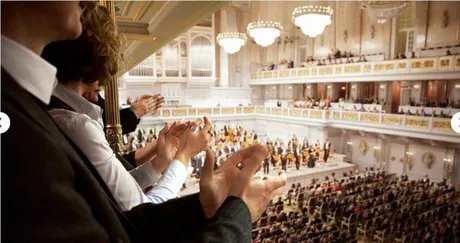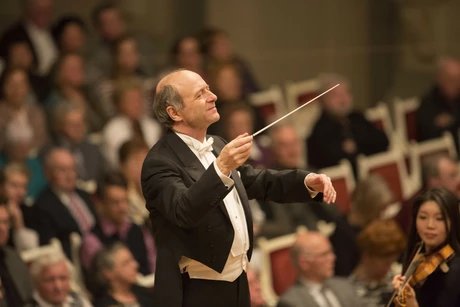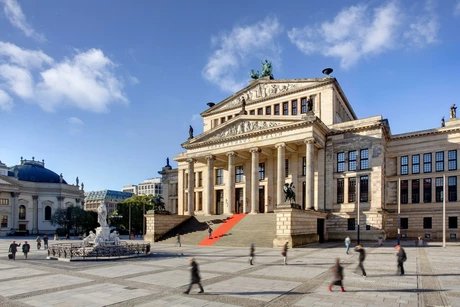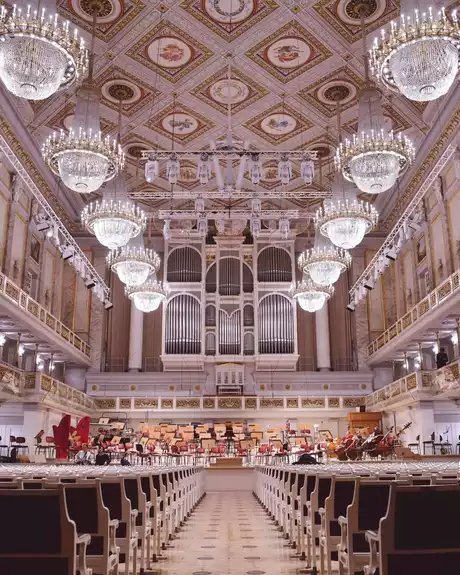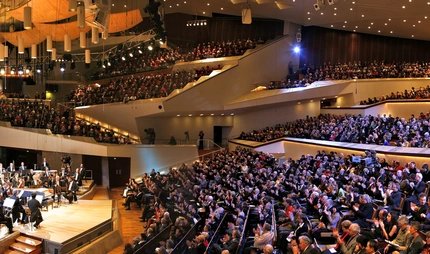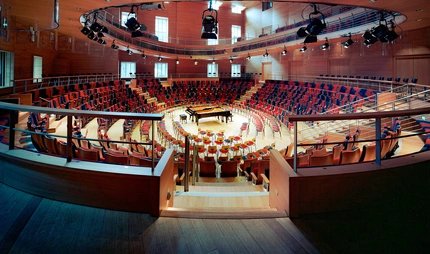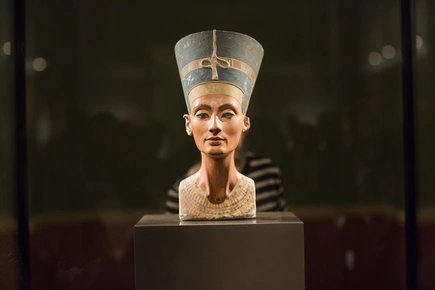
Konzerthaus Berlin
Classical music in a classical setting
For many locals and visitors, the neo-classical Konzerthaus hall is Berlin’s most attractive venue for top-flight classical music. Here, right at the heart of the stunning Gendarmenmarkt square, you can enjoy an unforgettable classical concert experience.
The Konzerthausorchester
The main orchestra is the Konzerthausorchester under chief conductor Joana Mallwitz, the first woman to lead one of Berlin's major orchestras. It is one of the seven major orchestras in Berlin. Former chief conductors include great masters of international renown such as Christoph Eschenbach, Iván Fischer and Kurt Sanderling.
Special programmes: Mozart and coffee
In the middle instead of just being there: in the In the middle series, you can take a seat right in the middle of the orchestra and experience the music and the musicians up close. Tempo, Tempo: musicians from the Konzerthausorchester and talented young musicians play 45 minutes of classical music every Wednesday afternoon at the Espresso Concerts - and there's a delicious espresso beforehand. You can get to know Joanna Mallwitz better at the Night Sessions on Fridays.
History of the building
The Konzerthaus was originally a theatre: it was built in the 18th century as a French comedy house at the request of Frederick the Great. At the beginning of the 19th century, the architect Carl Gotthard Langhans planned a new, more ornate building. However, this only stood for 15 years. After a fire, the Schauspielhaus was rebuilt in 1821 - by Berlin's most famous architect Karl Friedrich Schinkel.
The theatre has seen many great evenings: Wolfgang Amadeus Mozart attended a performance of his opera The Abduction from the Seraglio in 1789. Schinkel's stage design adorned the opera Undine by E.T.A. Hoffmann. Paganini and Franz Liszt gave guest performances. Richard Wagner conducted The Flying Dutchman.
And: when the Konzerthaus was still a theatre, the corner seat at number 23 in the stalls belonged to Theodor Fontane, who reviewed the plays - and sometimes tore them apart.
Bombs destroyed the theatre during the Second World War and it burnt to the ground. The theatre was only reopened in 1984 - now as a concert hall. Since then, great conductors and orchestras have performed here. After the fall of the Berlin Wall, Leonard Bernstein conducted Beethoven's Ninth with an international orchestra and transformed the text of the chorus into the Ode to Freedom.
Architecture of the building
The exterior of the building is a detailed reconstruction of Schinkel's old theatre. The interior, on the other hand, has been redesigned but furnished in a neoclassical style. It is worth letting your eyes wander during a concert in the large hall and enjoying the white and gold decor. The eye-catcher is the large organ with 74 stops and a total of 5,811 pipes. There is also the Apollo Hall for smaller concerts, a Music Club and the modern Werner Otto Hall.
Information for school classes
Free rehearsal visits give school classes an insight into the work of a symphony orchestra. Musicians are available for discussions before and after the rehearsal. Upper school classes can even attend dress rehearsals. In preparation for the rehearsal visits, either the teachers are sent programme booklets 14 days before the visit, or the classes are visited by volunteers from the Konzerthaus. Register at probenbesuch@konzerthaus.de
Parking at the Konzerthaus
There is an exclusive Konzerthaus rate for the Taubenstraße/Jägerstraße underground car park: 5.50 euros for six hours. Please have your parking ticket stamped at the service desk in the foyer.

